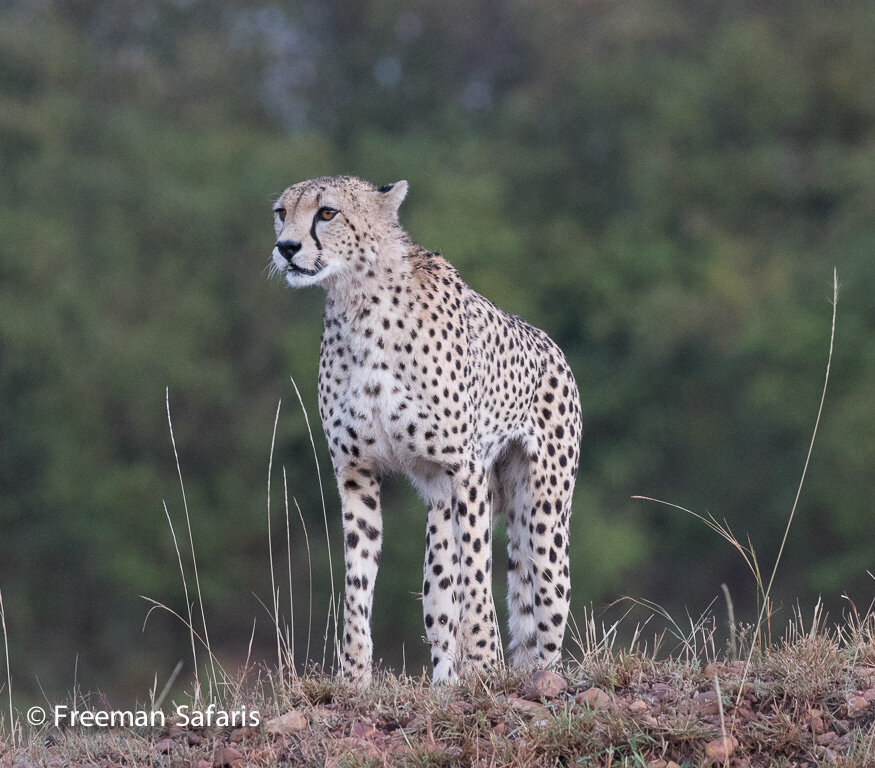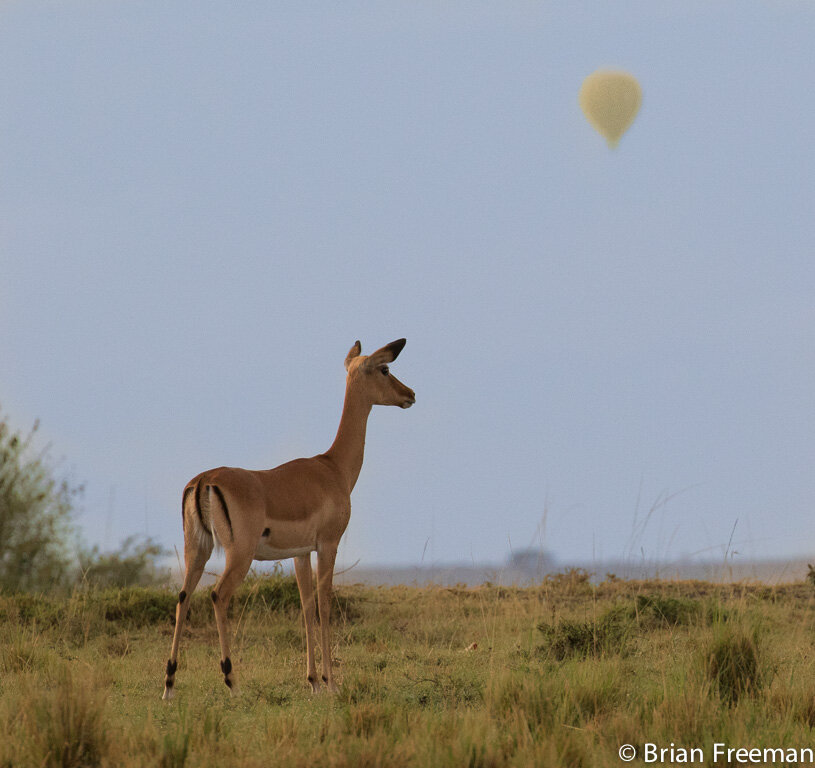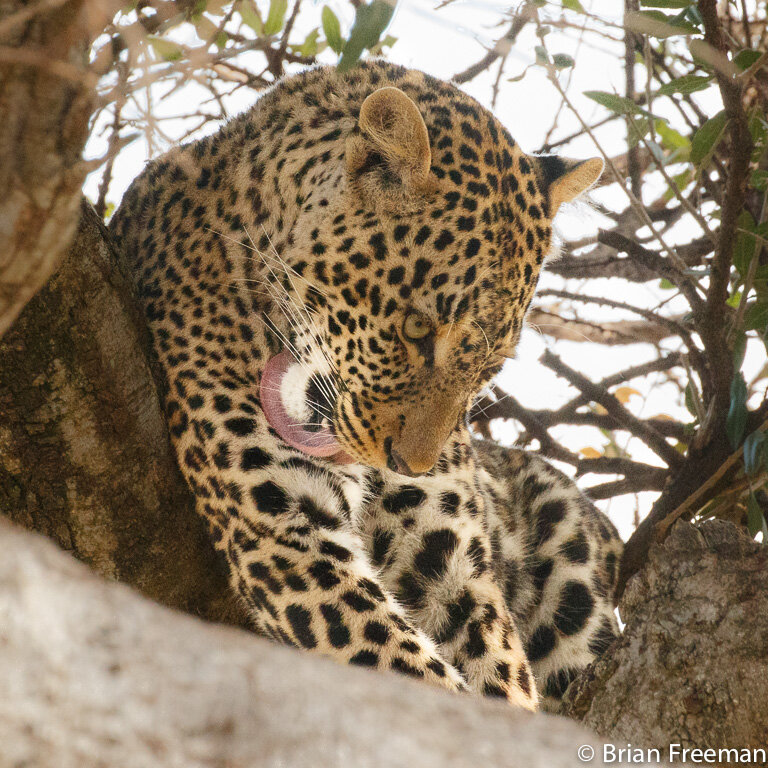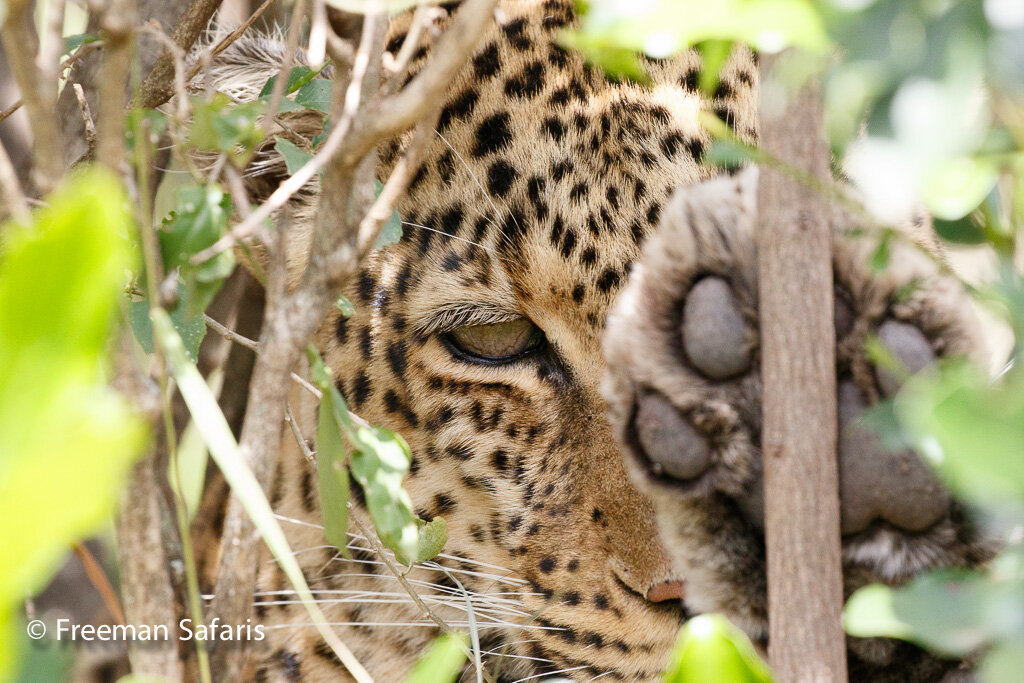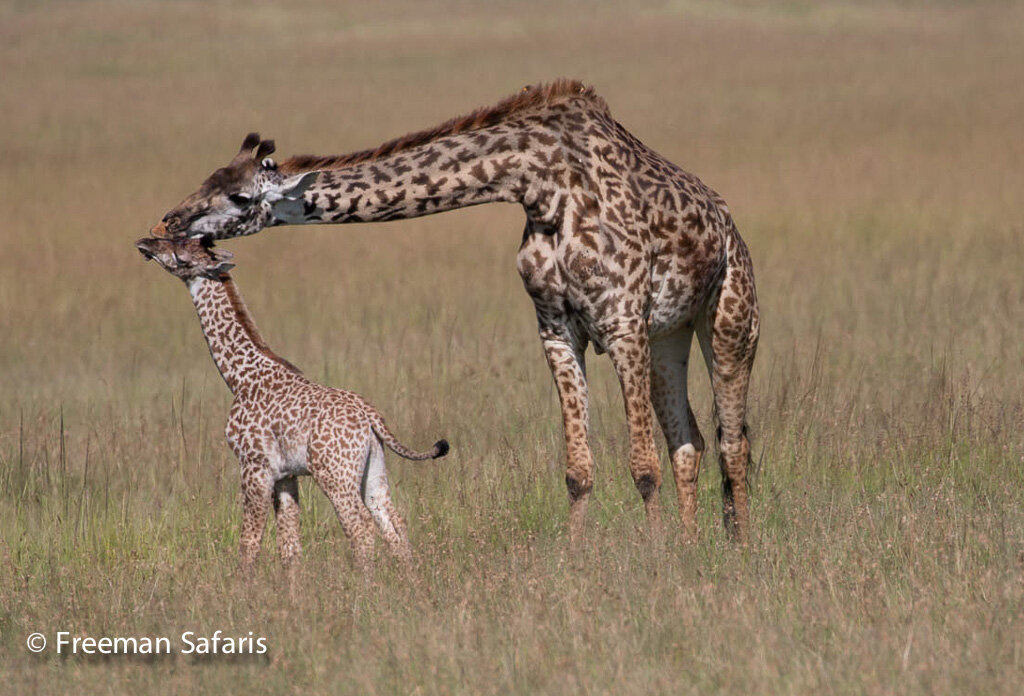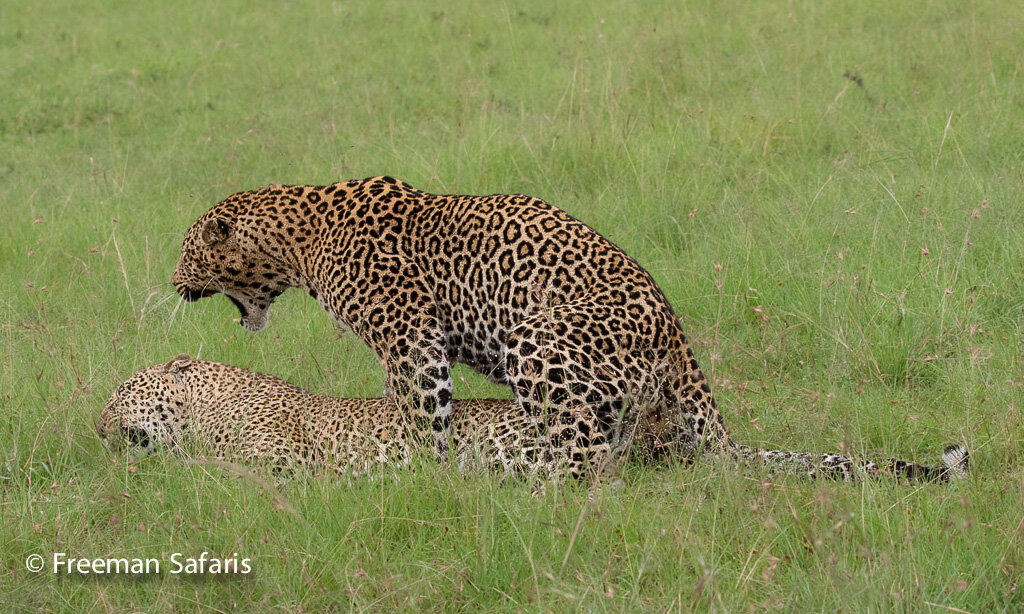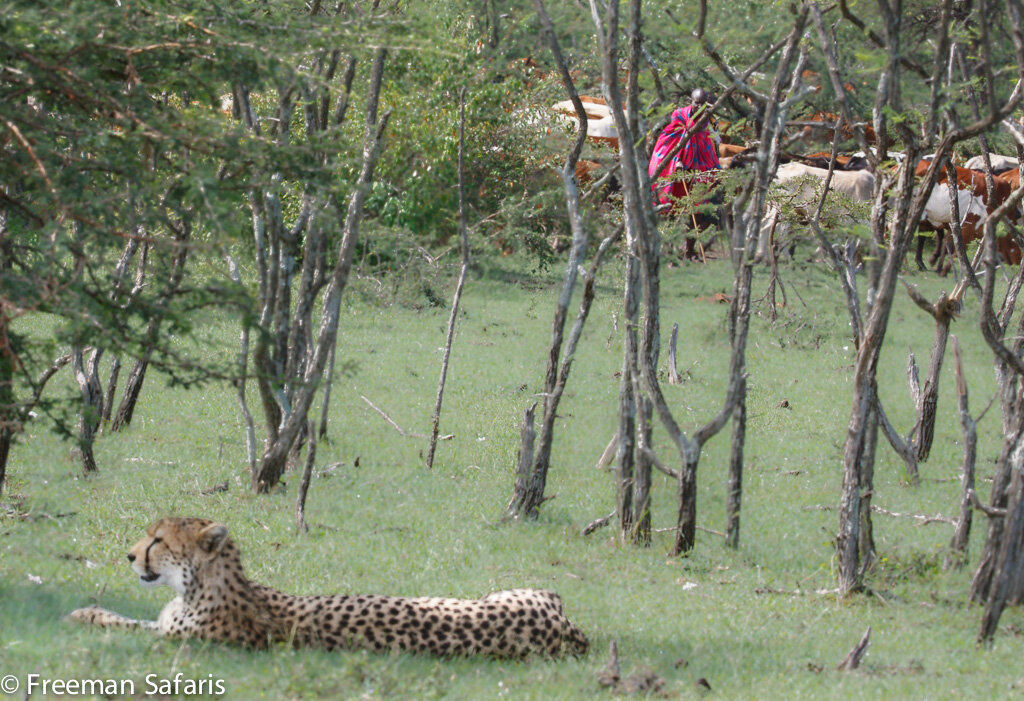An overview of our Masai Mara safaris
Masai Mara
The Masai Mara in particular is quite different through it’s annual cycle, some months will suit you better than others depending on what is important to you.
You may want to see ‘The Great Migration’ and river crossings, or come when the long grasses provide a unique savannah landscapes, observe the migratory birds or in the birthing months watch the young game play.
Freeman’s Manyatta
Freeman Manyatta is located on an isolated river bank within the Olare Orok area .This is as close as it gets. Each day at dawn and dusk we explore the surrounds to discover the natural rhythm of life that is Africa. From a new group of young lion cubs to the migrating wildebeests, cheetahs and zebras.
Most days we are out from dawn to dusk, with plated picnic lunch somewhere in the middle of the plains under an acacia tree. Other days we return to the Manyatta in the heat of the midday sun. It is difficult to give a day by day account as it depends entirely on the game that crosses our path. However, we will have been tracking events for some time so we will have an extremely good idea of what’s where. But as we all know animals can be so unpredictable and that’s the fascination of wildlife.
Freeman Manyatta provide a totally immersive experience of the real Africa. Our Manyatta is located a stone throw from the national park so you are living day and night with the animals, the people and incredible fauna that is the Masai Mara. Experience the wild from dawn to dusk!
Planning When To Go
Kenya is close enough to the equator that there are roughly 12 hours of daylight all year round. Temperatures are similar throughout the year at 25-28 degrees Celsius in the day and 10-13 degrees Celsius at night and slightly warmer in the arid northern areas.
There are Many Good Times to Visit Kenya
Freeman’s Manyatta operates all year round. The main consideration for most is to avoid the rainy seasons but as we can explain this is not a no go period at all. Some of our clients come during these times for good reason such as the game is more active during the cooler days .
The Masai Mara in particular is quite different through it’s annual cycle, some months will suit you better than others depending on what is important to you.
You may want to see ‘The Great Migration’ and river crossings, or come when the long grasses provide a unique savannah landscapes, observe the migratory birds or in the birthing months to watch the young game play.
A day on safari…
5.15 am – We make sure you are up in good time to enjoy breakfast.
6.00 am – Meet your driver, leave for your game drive and watch the sun rise out on the plains.
9.00 am – Tea and coffee break perhaps under an acacia tree or by the river watching the wildlife
12.30 pm – Return to the Manyatta, relax, freshen up or download your images and enjoy lunch.
3.15 pm – Leave for your afternoon game drive, enjoy the evening light and the spectacular sunset then return to Manyatta.
7.30 pm – Meet for a chat around an open fire, enjoy a cold drink and listen the sounds of Africa.
8.00 pm – Enjoy a three course meal and retire to the campfire for a drink or your bed for a well deserved sleep.
Other Safari Options - Enquire for more information
COMBINE SAMBURU & THE MARA IN THE BEST OF KENYA SAFARI
Both regions offer different experiences, animals and sceneries, making the combined Best of Kenya Safari the ultimate safari. This safari starts in Samburu but it is also possible to start in the Mara by doing this itinerary in reverse.
The park consists of a beautiful but scorched landscape. Here conditions are ideal for Grevy’s zebra, oryx, gerenuk and many more dry country mammals as well as a huge variety of birds such as the vulturine guineafowl. During lunch at the camp you will enjoy watching the elephants in the river from your tent.
The last day we aim to leave by 08:00. We drive on the tarmac road to Isiolo, a small cosmopolitan town before travelling up and around Mt, Kenya to Nanyuki where we stop for a cool drink before continuing west to Thomson’s Falls where we stop for lunch. We then proceed south down the Rift Valley wall to Naivasha, arriving by late afternoon. We stay at Elsamere, the former home of George Adamson (Born Free) right on the lake shore. There is time for a boat trip on Lake Naivasha taking pictures of Fish Eagles swooping down and Hippos close by.
The Sights of Samburu
The daily routine is very similar to that at the Mara. We are out at first light, making the most of the cool morning. The park consists of a beautiful, but scorched landscape. Here conditions are ideal for Grevy’s zebra, oryx, gerenuk and many more dry country mammals as well as a huge variety of birds such as the vulturine guinea fowl.
The river is the lifeline here and, depending on the time of year, it can be a raging torrent or as dry as a bone, but you will never be disappointed. Samburu is the place to see huge numbers of elephant and we see many! We will spend a couple of hours under a tree on the river bank watching ‘elephant action’, the crossings, drinking, playing, fighting and chasing and even being charged by the ‘totos’ – baby bull elephants!
The glades produce great leopards. We have seen a leopard here on every safari for the last four years. Samburu is usually very hot, dry and dusty so take good precautions for yourself and your equipment! During lunch at the camp you will enjoy watching the elephants in the river from your tent.
The Gorillas of Uganda
Travel the plains to Uganda to see the endangered mountain gorillas in their natural habitat. Encountering these extraordinary primates is an experience like no other. We support the incredible work the rangers do in protecting these precious animals.
At 6:30am after breakfast we drive to the park headquarters for briefing on how you will behave in front of mountain gorillas in the mist. Tracking may take 3-5 hours but can be longer although exceptional. Stay in the presence of the gorillas for a maximum of one hour before returning back to your Lodge for lunch.


